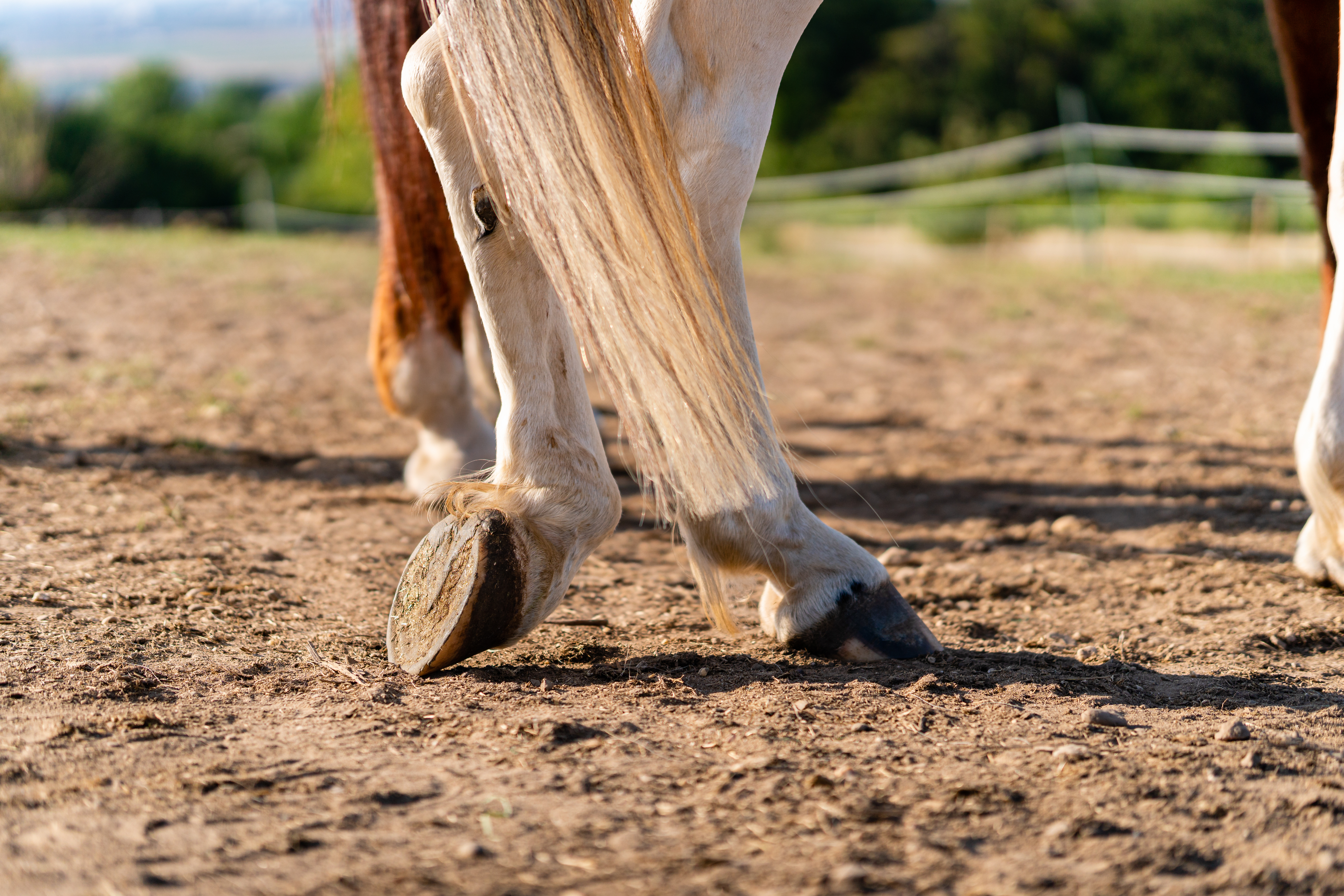Hind-leg hitch or hind-leg lameness?
- April 2, 2024
- ⎯ Equus
As you walk past your horse’s stall, you notice that he has dropped his hip, with his foot rolled forward, resting on its toe. This hind-leg hitch just the casual “resting” posture of a relaxed and comfortable horse—or is it? If this is the first time you’ve ever seen your horse standing this way, or if he seems to be adopting this posture more often lately, take a few minutes to make sure there’s nothing amiss.

- Watch where he puts his weight. A sound horse will alternate the hind leg he rests, so take note if the same leg is always “hitched.” Also, if a leg or hoof hurts, a horse will usually elevate the limb with the tip of his toe barely touching the ground.
- Look for signs of injury. Inspect the resting leg for indications of trauma or injury, such as cuts, scrapes or swellings.
- Lift the opposite leg. If your horse is simply relaxing, he won’t resist shifting his weight onto the resting leg.
- Ask your horse to step forward or back onto the resting leg. If he is able to move and bear weight normally on both hind limbs, he probably doesn’t have a severe injury. If he cocks the same hoof when you leave him alone for a few minutes, however, he may be experiencing chronic pain.
Click here to learn what noisy joints may mean.
Of course, if you have any lingering concerns about your horse’s posture, call your veterinarian and let her know.
Don’t miss out! With the free weekly EQUUS newsletter, you’ll get the latest horse health information delivered right to your in basket! If you’re not already receiving the EQUUS newsletter, click here to sign up. It’s *free*!





